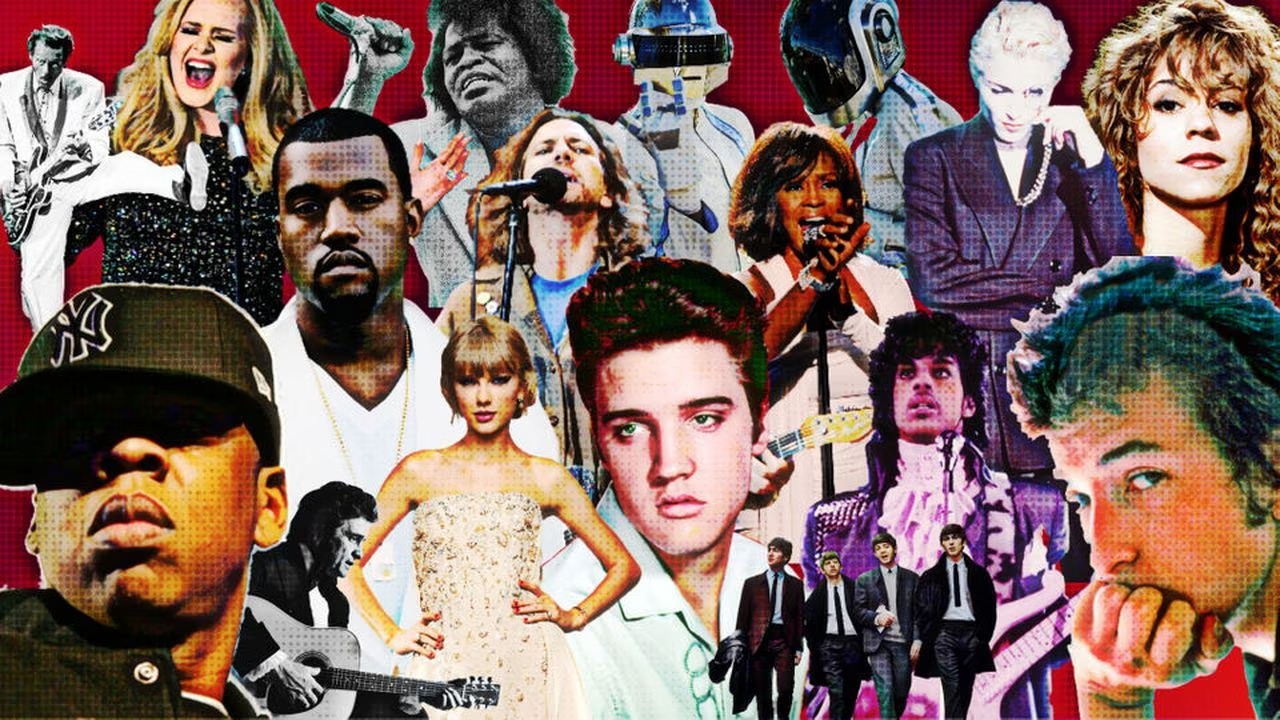
Hollywood has always been a shimmering tapestry of dreams, glamour, and larger-than-life personalities, especially during its fabled Golden Age. While the silver screen projected tales of romance, adventure, and camaraderie, behind the carefully constructed façade, a different kind of drama often unfolded. The pressure cooker environment of film sets, coupled with towering egos and clashing ambitions, frequently ignited fiery feuds that would become as legendary as the movies themselves. These weren’t just minor disagreements; they were epic battles of wills, often brushed aside for the cameras but fiercely fought off-screen.
For fans of classic cinema, the intricate web of relationships and rivalries among Hollywood’s elite provides endless fascination. It’s a testament to the sheer professionalism (or perhaps just iron will) of these stars and creators that some of the most enduring films were made amidst such palpable tension. From accusations of sabotage to public insults, and even alleged physical altercations, these feuds transcended mere gossip, shaping careers, altering film productions, and leaving an indelible mark on cinematic history.
Today, we’re pulling back the velvet curtain to explore some of the most notorious behind-the-scenes feuds from the Golden Age of Hollywood. Prepare to uncover the surprising origins, escalating conflicts, and dramatic resolutions of these unforgettable Tinseltown rivalries. These are the clashes that prove that sometimes, the real drama happens when the cameras stop rolling, or even worse, when they’re still recording.

1. **Bette Davis & Joan Crawford**
It’s impossible to discuss legendary Hollywood feuds without placing Bette Davis and Joan Crawford at the very top of the list. Their rivalry wasn’t just intense; it was a decades-long saga of mutual disdain that became so iconic, it inspired an entire television series. These two titans of the silver screen, each a formidable force in her own right, were forever pitted against each other, both professionally and personally.
Their differing paths to stardom only seemed to fuel the fire. Joan, born Lucille LeSueur, clawed her way out of an impoverished childhood through dancing, eventually becoming MGM’s glamorous star specializing in scrappy yet elegant roles. Bette, or Ruth Davis, took a different route, starting on Broadway after boarding school. She initially struggled in Hollywood due to a perceived lack of appeal and a defiant refusal to conform, yet she went on to win two Oscars and garner 10 nominations, establishing herself as the superior actress in many critics’ eyes. While Bette was considered the better actress, Joan was undoubtedly the bigger ‘star,’ setting the stage for an inevitable collision.
The animosity reportedly began over shared romantic interests, with Crawford’s marriage to Davis’s former flame often cited as the origin of their bad blood. Things only escalated when they found themselves at the same studio, directly competing for roles. Neither woman shied away from publicly slinging insults, with classics like Bette’s claim that Crawford had “slept with every star on the MGM lot except Lassie,” and Crawford’s equally scathing assessment of Davis’s acting: “She’s a phony, but I guess the public likes that.” This verbal warfare continued for decades, a constant undercurrent in their parallel careers.
By the early 1960s, Hollywood’s notorious ageism saw both their careers on a steep decline. In a surprising turn of events, Joan offered Bette a part in the film adaptation of “What Ever Happened to Baby Jane?” — a project that necessitated their collaboration. This seemingly unthinkable alliance, driven by the need to revitalize their fading careers, only pushed their feud into overdrive during production. Tales of one-upmanship and accusations of physical and psychological abuse ran wild, including Davis allegedly installing heavy weights in her pockets for a scene where Crawford, confined to a wheelchair, had to drag her. Despite the on-set turmoil, the film was a hit.
The drama didn’t end with the wrap of filming. Bette, but not Joan, was nominated for an Academy Award for her performance in “Baby Jane.” However, it was Joan who managed to stand on the Oscar stage that year, having made a deal with all of Bette’s competitors to accept their awards on their behalf if they won. When Anne Bancroft won Best Actress, Joan triumphantly walked up to accept the award, effectively stealing Bette’s moment in a final, iconic act of rivalry. This feud, a 40-plus-year saga, remains one of the most compelling and memorable in Hollywood history, a true testament to two fiercely competitive legends.
Read more about: Behind the Scenes: 13 Major Actors Who Flat-Out Refused to Work Together in Hollywood
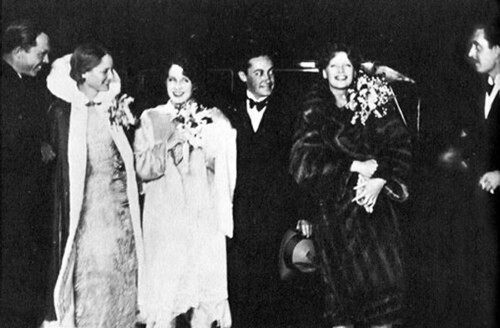
2. **Irving Thalberg & Erich von Stroheim**
Before he was known as the ‘Wunderkind’ of MGM, a young Irving G. Thalberg held a high-ranking producer position at Universal Studios. It was here that he orchestrated one of his most controversial actions, an incident that would forever alter the landscape of the film industry and serve as the climax of his heated feud with actor-director Erich von Stroheim.
Erich von Stroheim was an early auteur, celebrated for starring in many of his own films, yet equally infamous for productions that consistently went over budget and overlong. His artistic vision, while often brilliant, clashed directly with the pragmatic financial realities that producers like Thalberg had to contend with. Thalberg’s repeated warnings to rein in costs and running times were largely ignored, and sometimes outright refused, escalating the tension between the two powerful figures.
The conflict reached a boiling point during the making of “Merry-Go-Round” in 1923. Reports even suggest that the two men nearly came to physical blows in Thalberg’s office, a stark illustration of their fundamental disagreements. In a move that stunned the entire industry, Thalberg fired von Stroheim from the production. This bold decision was a clear and unequivocal warning: under the nascent studio system, not even visionary directors were untouchable.
Thalberg’s decisive action established a precedent that reverberated throughout Hollywood for decades, cementing the power of the studios over creative talent. It underscored the fact that commercial viability and adherence to studio mandates would often take precedence over unbridled artistic expression, particularly when budgets ballooned out of control. This early feud laid the groundwork for the industry’s structured production model.

3. **Bud Abbott & Lou Costello**
For many years, Bud Abbott and Lou Costello were the epitome of a successful comedy duo, captivating audiences with their undeniable chemistry, charisma, and spirited performances. Their iconic routines and films brought laughter to millions, making them household names across America. However, beneath the surface of their comedic brilliance, their personal relationship was anything but harmonious.
Behind the scenes, the dynamic between Abbott and Costello was frequently strained, with various reasons for their acrimony surfacing over the years. Some accounts point to Costello’s dissatisfaction with being second-billed, feeling overshadowed by Abbott despite their equal partnership in comedy. Other reports suggest disagreements over more mundane issues, even involving a maid, illustrating how seemingly minor incidents could ignite deeper resentments between them.
As their careers progressed, the duo faced significant challenges, including severe tax problems and ultimately being dropped from their lucrative contract at Universal. These financial woes and contractual disputes placed immense pressure on their partnership. Despite attempts to continue their act, the personal cracks had become too wide to bridge. The combination of monetary struggles, ongoing spats, and alcohol use disorder ultimately led to the irreparable dissolution of their celebrated partnership.
Their inability to reconcile and overcome these deep-seated issues meant that one of Hollywood’s most beloved comedy duos eventually parted ways, leaving behind a legacy of laughter marred by the quiet tragedy of a friendship that couldn’t withstand the pressures of fame and personal demons. Their story serves as a poignant reminder that even the most seemingly perfect on-screen chemistries can hide profound off-screen discord.
Read more about: Decoding Fear: Exploring Pivotal Moments in Cinematic Horror History
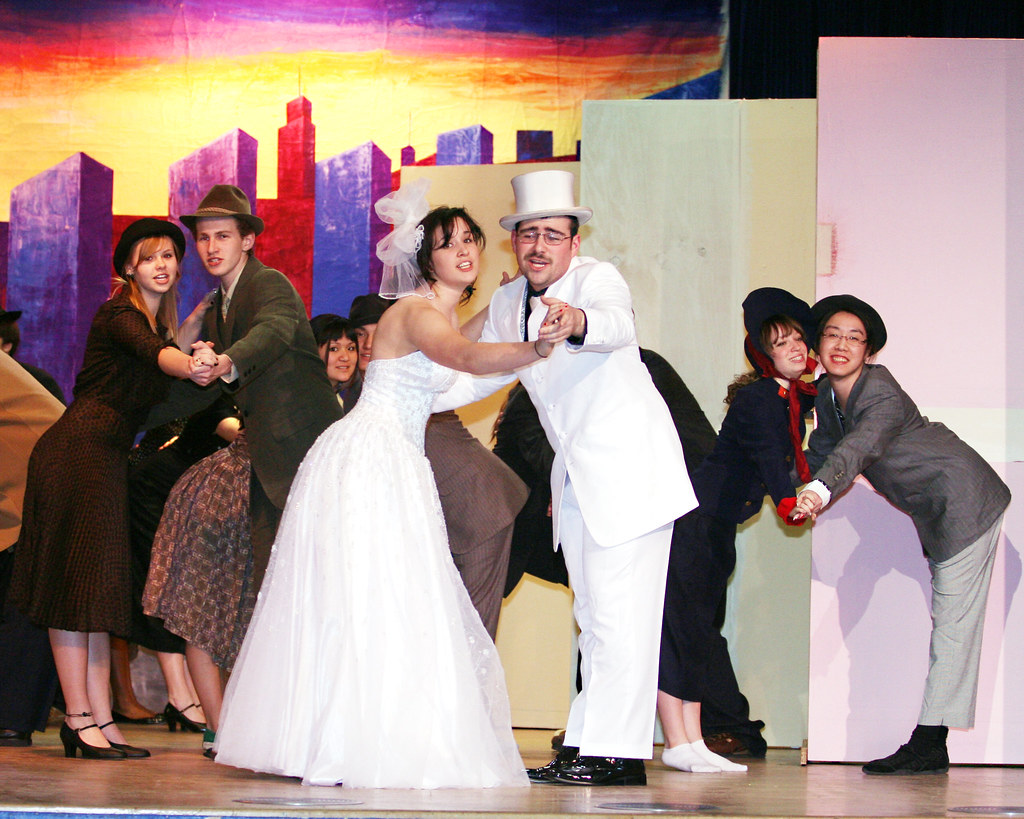
4. **Marlon Brando & Frank Sinatra**
When the casting for the 1955 musical film “Guys and Dolls” was underway, megastar crooner Frank Sinatra had his sights firmly set on the lead role of Sky Masterson. Sinatra was famously accustomed to getting what he wanted in Hollywood, a reputation well-earned through his immense popularity and influence. However, to his profound displeasure, the coveted role was instead given to the method acting sensation, Marlon Brando.
Sinatra was subsequently cast as the professional gambler Nathan Detroit, a significant role but not the one he desired. His frustration with the casting decision quickly morphed into outright disdain for Brando. Sinatra, a more traditional performer, was reportedly unimpressed by Brando’s immersive method acting and naturalistic approach, often derisively referring to him as “Mumbles.” This moniker alone encapsulates the contempt he held for his co-star’s acting style.
Needless to say, the relationship between these two colossal personalities on set was far from warm. Brando, known for his own eccentricities and intensity, reportedly retaliated against Sinatra’s animosity. One infamous tale recounts Brando deliberately messing up takes during a scene where Sinatra had to eat cheesecake. He would do this repeatedly, forcing Sinatra to consume multiple servings of the dessert, a subtle yet maddening form of torment designed to test the crooner’s patience.
The feud between them is said to have reached a frightening climax, with rumors circulating that Sinatra, leveraging his formidable connections, had some (likely mafia-affiliated) tough guys threaten Brando’s life. While the extent of these threats remains a subject of speculation, it certainly paints a vivid picture of the intense and dangerous animosity between the two. If anything, this tumultuous experience on set probably served as potent inspiration for Brando’s later, most famous roles, where he often portrayed characters operating in the shadows of power and intimidation.
Read more about: Unmasking the Ages: How Old Were These Legendary Actors When They Embodied Their Most Iconic Film Roles?

5. **Louella Parsons & Hedda Hopper**
For decades, the cutthroat world of Hollywood gossip journalism was dominated by two formidable women: the grandiose Louella Parsons and the reactionary Hedda Hopper. Their professional rivalry was not merely a competition for scoops; it evolved into a deeply personal feud that played out across the pages of widely-syndicated columns, shaping public opinion and careers.
These two powerful columnists transformed major Hollywood scandals into their battlegrounds. Controversial events, such as the release of Orson Welles’ “Citizen Kane” (which angered William Randolph Hearst, Parsons’ boss) and Ingrid Bergman’s extramarital affair, became fuel for their relentless efforts to outscoop each other. For the better part of twenty years, Parsons and Hopper were locked in a constant struggle for exclusivity, often publishing opposing narratives or embellishing details to gain an edge.
Despite their apparent power to dig up dirt and make or break careers, Hollywood gossip columnists were, in many ways, at the mercy of the studio publicity departments. Studios often manipulated these columnists, feeding them controlled information to shape public perception. In their longstanding feud, Hopper and Parsons were not just clawing at each other; they were also fiercely competing for job security and influence within a system that could easily discard them.
The legacy of their rivalry was a long trail of tarnished and broken Hollywood stars. Their columns, filled with innuendo, rumors, and carefully crafted narratives, could ignite public outrage or bolster a star’s image. Their battle for supremacy profoundly impacted the lives and careers of countless actors and filmmakers, showcasing the immense power wielded by gossip columnists in an era before social media, where a printed word could define a star’s destiny. They truly were the arbitresses of Tinseltown’s public face.
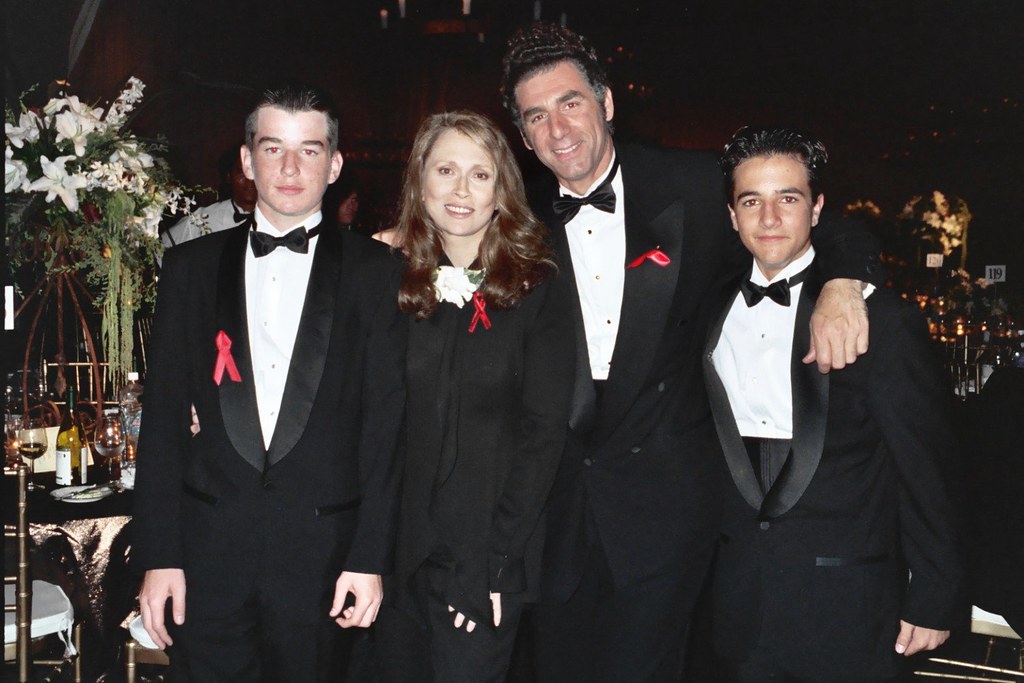
6. **Faye Dunaway & Roman Polanski**
Both Faye Dunaway, the luminous star, and Roman Polanski, the acclaimed director, are infamous figures in Hollywood, though for vastly different reasons. Their collaboration on the neo-noir masterpiece “Chinatown” (1974) resulted in one of cinema’s most enduring films, but the production itself was a cauldron of creative clashes and personal animosity.
Polanski was professionally known for his demanding, and often sadistic, directorial methods. He was meticulous, unyielding, and expected absolute adherence to his vision, pushing actors to their limits. Dunaway, on the other hand, had her own complicated history of questionable set behavior and a reputation for being strong-willed, suggesting she wouldn’t be an easy fit for Polanski’s rigid approach. The stage was set for conflict.
Dunaway herself described the experience of making “Chinatown” as humiliating. One notable incident saw the director reportedly pulling a hair from her head because it was catching the light in a way he disliked, a testament to his obsessive attention to detail and his willingness to exert control. This level of micro-management and the constant pressure contributed to a highly charged atmosphere on set, pushing the actress to her breaking point.
Perhaps the most infamous rumor surrounding their feud involves an incident where Dunaway, allegedly infuriated by Polanski not allowing her a bathroom break, urinated in a cup and threw its contents in his face. While the veracity of this specific story has been debated, it vividly illustrates the extreme level of tension and disrespect that characterized their working relationship. Despite the profound personal clashes and the challenging environment, the film’s undeniable artistic success seemed to redeem the ordeal for both. Years later, remarkably, the two expressed mutual admiration, suggesting that for them, the artistic triumph of “Chinatown” ultimately justified the immense headaches it caused.
Read more about: Beyond Blockbusters: 10 Visionary Directors Who Redefined Cinema in the 1970s, And Whose Films Still Captivate Audiences Today.

7. **Jerry Lewis & Dean Martin**
Before they became synonymous with celebrity roasts and annual telethons, Dean Martin and Jerry Lewis were an unstoppable comedy act, transitioning seamlessly from nightclubs to films and television. Their unique blend of Martin’s suave crooning and Lewis’s manic physical comedy propelled them to astronomical heights, making them the highest-paid act in the entire entertainment business. Their on-screen chemistry was electrifying, but off-screen, a different story was unfolding.
Despite their incredible success, cracks began to show in their partnership. After sixteen films and an exhausting schedule of endless tours, Martin reportedly grew weary of Lewis receiving better reviews, which often lauded his more exaggerated comedic performances, seemingly at Martin’s expense. The relentless touring schedule also took its toll, with both men feeling the immense pressure of constant performance and public scrutiny. These underlying resentments and the grueling pace gradually chipped away at their bond.
The tension reached its peak in 1956 during the production of their final film together, “Hollywood or Bust.” The set became a battleground for their simmering animosity, making it clear that their partnership was beyond repair. Following the film’s completion, the two comedy legends would not speak to each other for two decades, a testament to the depth of the rift that had formed between them. Their professional separation marked the end of an era for millions of fans.
However, their long-standing feud finally saw a surprising and heartwarming reconciliation. In 1976, during Lewis’s annual Muscular Dystrophy Association telethon, Frank Sinatra orchestrated a surprise reunion, bringing Martin out onto the stage to greet a visibly emotional Lewis. This public act of forgiveness, after twenty years of silence, allowed their friendship to resume, proving that even the most entrenched Hollywood feuds could, with time and effort, eventually be put to rest. It was a moment that captured the hearts of fans who had longed for the return of their beloved duo’s camaraderie.
Delving deeper into the captivating underbelly of Tinseltown, we continue our exploration of the legendary rivalries that burned bright, often behind the cameras, during Hollywood’s Golden Age. These are the untold stories of clashing personalities, bruised egos, and raw ambition that ultimately contributed to the rich tapestry of cinematic history, proving that the drama often extended far beyond the script.
Read more about: Joyce Randolph, the Last Honeymooners Star, Dies at 99: Recalling Trixie Norton and Television’s Enduring Legacy
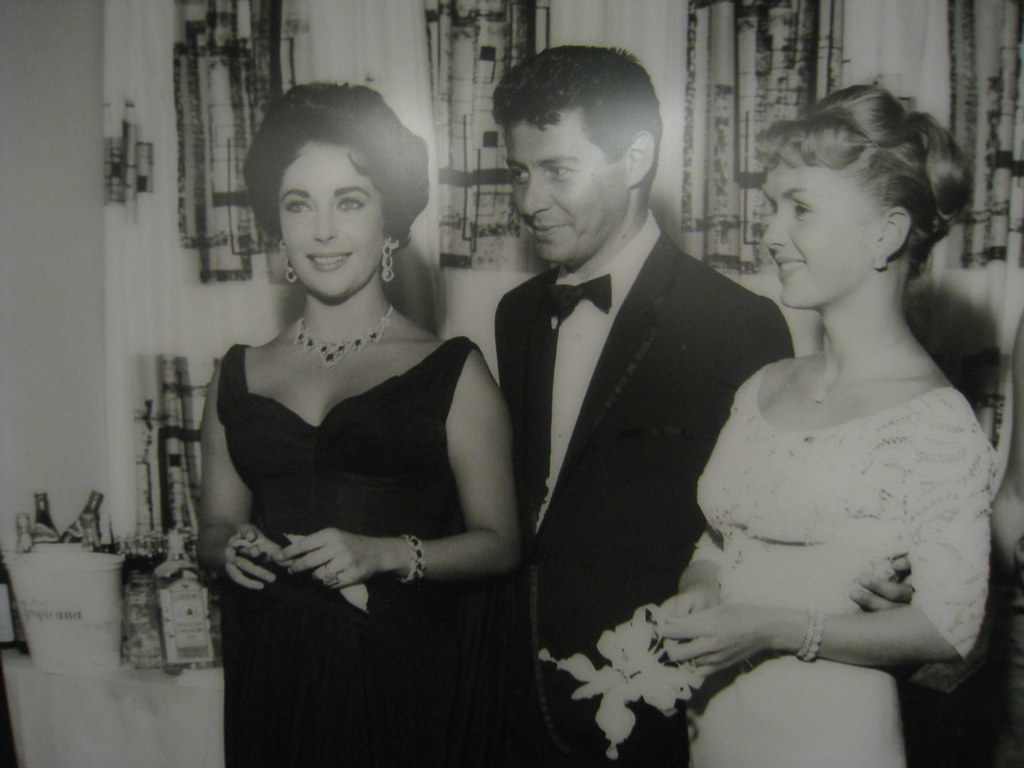
8. **Debbie Reynolds & Elizabeth Taylor**
Hollywood friendships can be notoriously fickle, but the bond between Debbie Reynolds and Elizabeth Taylor began with all the promise of enduring loyalty. These two rising stars first crossed paths at MGM when they were teenagers, quickly becoming inseparable friends, a testament to their shared experiences navigating the demanding studio system. Reynolds even stood by Taylor’s side as Matron of Honor when she married Hollywood producer Mike Todd, cementing what appeared to be an unbreakable sisterhood in the public eye.
However, this seemingly idyllic friendship was shattered by one of Hollywood’s most scandalous love triangles. Following the tragic death of Mike Todd in an airplane crash, a newly widowed Elizabeth Taylor found solace, and then romance, with singer and actor Eddie Fisher. The devastating catch? Eddie Fisher was Debbie Reynolds’ husband, and father to their two young children, including future star Carrie Fisher.
The revelation of Fisher’s affair and subsequent departure from Reynolds caused a media frenzy of epic proportions, blindsiding Reynolds and turning the private grief of one woman into a public spectacle. Carrie Fisher famously quipped that her father went to console Taylor “with his ,” perfectly encapsulating the raw, brutal betrayal. The friendship between the two actresses took a major, seemingly irreparable hit.
For roughly a decade, the former friends maintained an icy silence, refusing to speak to each other. Yet, in a testament to the complexities of human relationships, sometime after Elizabeth and Eddie’s divorce, fate intervened. They found themselves on the same cruise ship, a chance encounter that allowed them to finally confront their past. It was there, amidst the tranquil ocean, that they decided to put their bitter feud on ice and, remarkably, buried the hatchet, proving that even the most painful betrayals can sometimes find forgiveness.
Read more about: Beyond the Curtain Call: Remembering the Stars Whose Final Roles Shone After Their Lights Dimmed
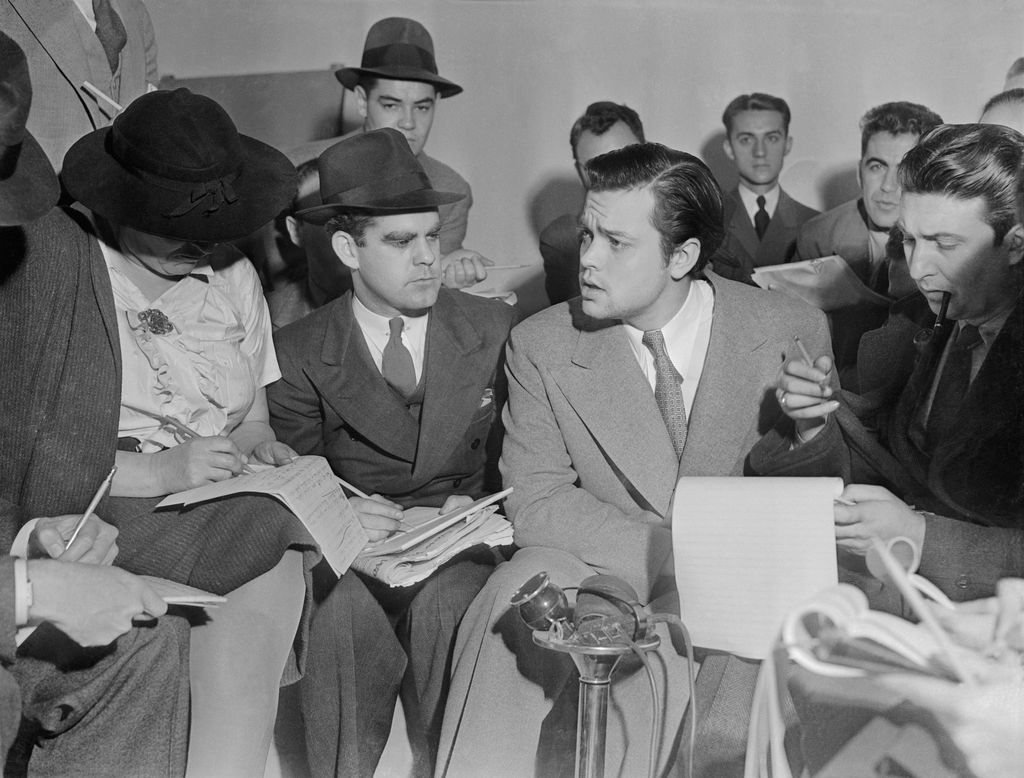
9. **Orson Welles & William Randolph Hearst**
Few men in early 20th-century America wielded as much power and influence as newspaper magnate William Randolph Hearst. His vast publishing empire, political ambitions, and opulent lifestyle made him an almost untouchable figure. It was against this backdrop that novice filmmaker Orson Welles embarked on what would become one of cinema’s most revered, and controversial, achievements: “Citizen Kane.”
Welles, with remarkable bravery for a newcomer, chose to base the film’s corrupt, lonely, and broken tycoon protagonist, Charles Foster Kane, on Hearst himself. This audacious decision, while artistically brilliant, was a direct challenge to a man accustomed to absolute control over his public image. When word inevitably leaked about the film’s inspiration, Hearst’s wrath was swift and devastating.
Hearst leveraged the full force of his media empire to suppress “Citizen Kane.” All mention of the upcoming film was forbidden from his vast network of newspapers, effectively creating a blackout. But this was merely the beginning of his campaign; Hearst used his influence to smear Welles, making the young filmmaker the subject of targeted libel, vicious rumors, and even attempts at blackmail. He even went so far as to try and purchase the original print of the film to have it burned, a desperate measure to erase its existence.
The intensity of Hearst’s reaction suggested that Welles’s film had indeed touched a raw nerve. One of the most intriguing and scandalous details often cited is the significance of the word “Rosebud” in the film, Kane’s dying utterance. Several sources claim that “Rosebud” was, in fact, the pet name Hearst used for the genitalia of his longtime lover, actress Marion Davies. If true, this deeply personal revelation would explain the profound fury with which Hearst pursued Welles, making the cinematic battle a deeply personal one.
Read more about: Revisiting Box Office Bombs: How These Cinematic Gems Defied Initial Failure to Become Undeniable Masterpieces
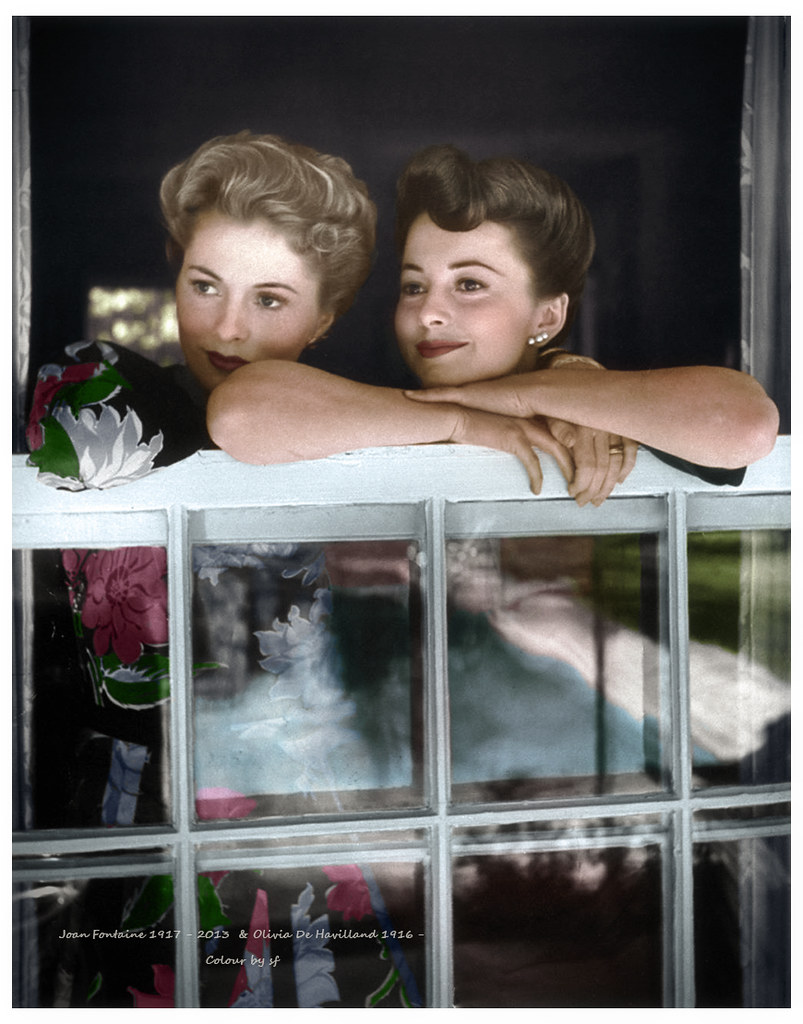
10. **Joan Fontaine & Olivia De Havilland**
The annals of Hollywood history contain many sibling rivalries, but none quite so enduring and famously frosty as that between sisters Joan Fontaine and Olivia De Havilland. Born just 15 months apart, their competitive dynamic began in childhood, fueled by what Fontaine perceived as their mother’s favoritism towards Olivia. This deep-seated resentment would fester and define their relationship for the entirety of their long, illustrious lives.
Their professional paths, while both stellar, were also marked by this underlying tension. Olivia earned an early seven-year contract with Warner Bros. in 1935, and in an ironic twist, even hired her sister, then Joan de Havilland, to be her chauffeur. It was during this time that a producer reportedly spotted Joan waiting for her sister and suggested she pursue acting herself, an idea that would further ignite the flames of their rivalry.
When Joan shared this exciting prospect with her mother, she was cautioned that Warner Bros. was ‘her sister’s studio.’ Determined to carve her own identity and avoid being associated with Olivia, the aspiring actress deliberately changed her last name to Fontaine and secured her own agent, a symbolic act of professional independence that underscored their growing estrangement. Despite achieving wonderful film careers, both sisters often found themselves squabbling, even over men like the eccentric Howard Hughes and writer Marcus Goodrich.
Their competitive streak was undeniable, and unfortunately, they never fully repaired their relationship. Even as the only pair of siblings to ever win Academy Awards for Best Actress, a feat most families would celebrate together, their personal animosity continued. It was a relationship characterized by distance and coolness, a poignant reminder that even shared success and familial bonds could not overcome decades of deeply ingrained resentment.
Read more about: Beyond the Red Carpet: 10 Classic Hollywood Scandals That Rocked the Golden Age
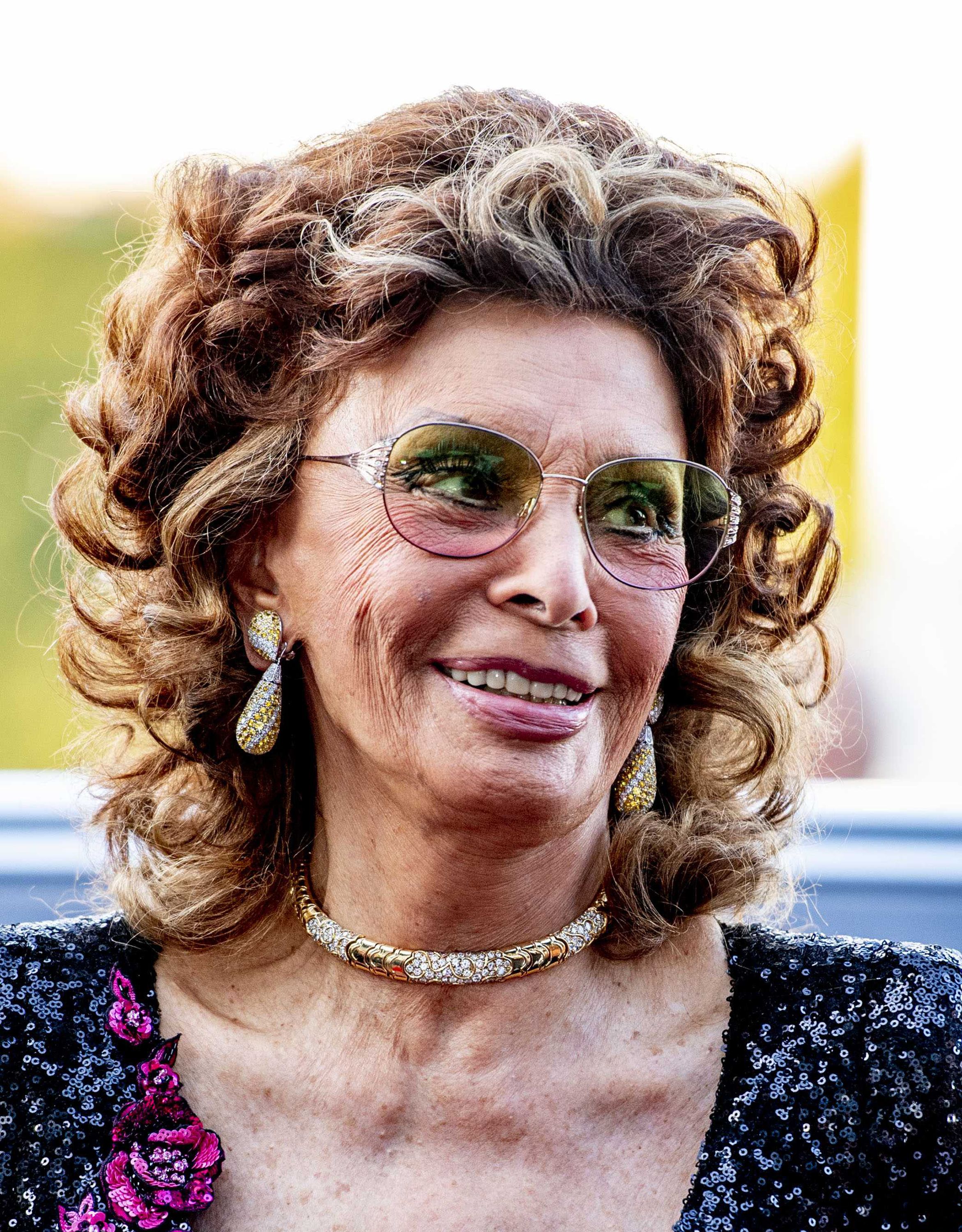
11. **Sophia Loren & Jayne Mansfield**
An image often speaks a thousand words, and in the case of Sophia Loren and Jayne Mansfield, one iconic photograph perfectly encapsulates the palpable contempt one Hollywood legend held for another. The scene was a glitzy Beverly Hills party, thrown in Loren’s honor to officially introduce the elegant Italian actress to the American film industry, a moment that should have been hers alone to savor.
However, the buxom blonde bombshell Jayne Mansfield, notorious for her extravagant and often revealing style, was determined to steal the spotlight. Mansfield, notably braless, made a direct beeline for Loren’s table, well aware that every eye in the room was fixed on her dramatic entrance. She brazenly sat down, positioning herself strategically to maximize her impact and, as Loren herself recalled, to ensure she was the absolute center of attention.
Years later, Loren provided a vivid and candid recounting of the moment captured in the infamous photograph. She described her internal struggle, “Where are my eyes? I’m staring at her because I am afraid they are about to come onto my plate. In my face you can see the fear. I’m so frightened that everything in her dress is going to blow — BOOM! — and spill all over the table.” This raw, unedited reaction perfectly illustrates the brazenness of Mansfield’s tactics and Loren’s uncharacteristic discomfort.
Despite the passage of time and countless requests from fans who have asked Loren to autograph the legendary photograph, she has consistently refused. This unwavering stance is a powerful indicator of the lasting impression Mansfield’s audacious attempt to upstage her left, a singular moment of Hollywood rivalry forever frozen in time, and still resonant with Loren years later.
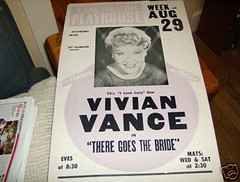
12. **Vivian Vance & William Frawley**
For millions of viewers, Ethyl and Fred Mertz were the beloved, curmudgeonly landlords and best friends of Lucy and Ricky Ricardo in the iconic television show “I Love Lucy.” Their on-screen banter and comedic timing were legendary, yet behind the scenes, the actors portraying them, Vivian Vance and William Frawley, harbored an intense mutual dislike that began from day one of production.
The significant age gap between the two, with Vance being 22 years Frawley’s junior, was a major point of contention for Vance. She openly expressed her belief that they would be a terrible match as a television couple, feeling that the disparity in their ages made their on-screen romance implausible and, to her, personally uncomfortable. This initial professional judgment quickly morphed into deep personal animosity.
Frawley’s personal habits further exacerbated the tension. He was a known heavy drinker, and while he had been explicitly warned not to drink while working, he often struggled with alcohol withdrawal on set. Accounts suggest that he frequently had to keep his hands in his pockets to prevent the cameras from catching them shaking, a stark and unsettling contrast to his jovial on-screen persona. This behavior likely fueled Vance’s disdain.
The animosity between them was so profound that when the opportunity arose for a spin-off show featuring their characters after “I Love Lucy” concluded, Vance flatly refused. Her unwavering “no way” sealed the fate of any potential Fred and Ethyl series, showcasing just how deeply rooted their mutual hatred was. Their professional success stands as a testament to their acting prowess, managing to convincingly portray a loving, albeit bickering, couple despite their profound off-screen discord.
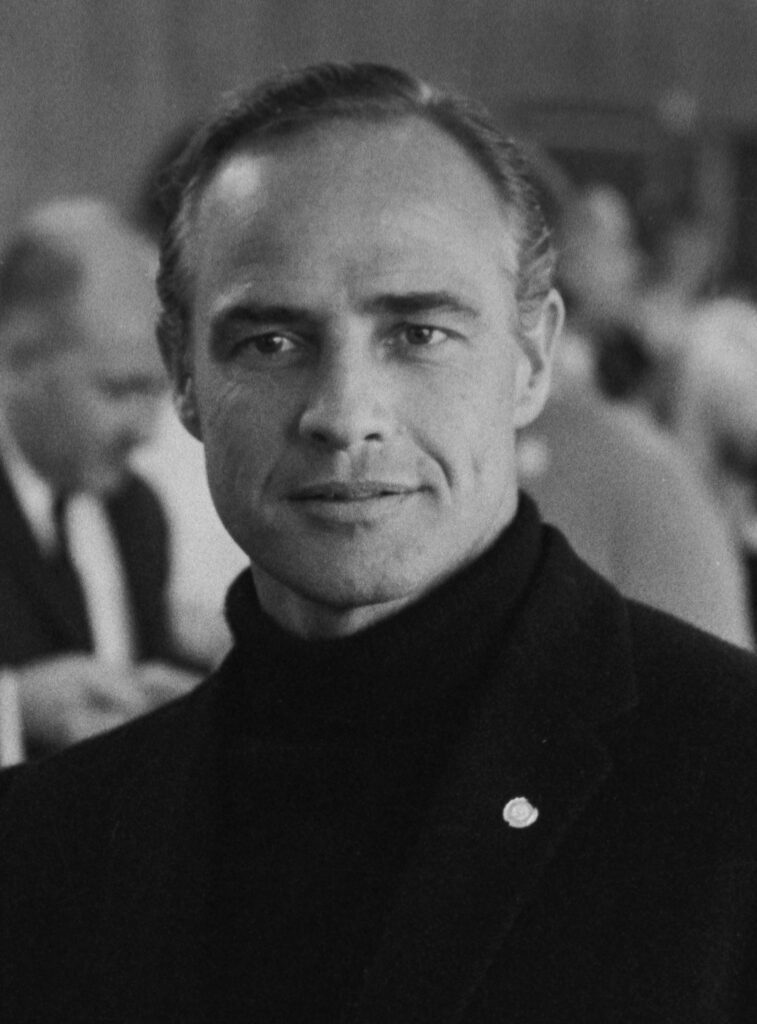
13. **Marlon Brando & James Dean**
The professional landscape of Hollywood in the 1950s was dominated by a new breed of actor, and few embodied the raw intensity of method acting more than Marlon Brando. As James Dean began his meteoric rise, often drawing comparisons to Brando’s style, a subtle yet significant rivalry emerged between the two brooding icons. Brando himself acknowledged the competitive undertone, famously quipping, “Mr. Dean appears to be wearing my last year’s wardrobe and using my last year’s talent,” a remark that perfectly captured the feeling of artistic one-upmanship.
However, the alleged connection between Brando and Dean extended far beyond professional competition into a realm of deeply disturbing personal claims. A book titled *James Dean: Tomorrow Never Comes* shocked the industry with allegations of a ‘Fifty Shades of Grey-type relationship,’ suggesting a dark and complex bond between the two stars. The book went further, claiming that not only was Dean deeply in love with Brando, but he would also willingly allow Brando to burn him with cigarettes for his own twisted pleasure, painting a picture of a profoundly troubled dynamic.
These sensational claims, portraying a relationship steeped in sadomasochism and manipulation, added a layer of unsettling intrigue to the already mysterious figures of Brando and Dean. Yet, Brando himself, in his own memoirs, explicitly denied having any ual relationship with James Dean. This denial leaves fans and historians to grapple with the conflicting narratives, cementing the alleged feud as one of Hollywood’s more enigmatic and disturbing whispers, where professional rivalry may have been intertwined with something far more sinister and unresolved.
Read more about: Unraveling the Legend: Marlon Brando’s Revolutionary Method Acting, His Tahitian Dream, and the Elusive Quest for His Own Story
14. **Bette Davis & Tallulah Bankhead**
The enduring allure of “All About Eve” has led many to speculate about the real-life inspirations behind its iconic characters, particularly the aging, grand theatrical star Margo Channing. For years, a popular assumption circulated throughout Hollywood that Bette Davis, in her masterful portrayal, had based Channing on another larger-than-life actress with an equally formidable ego: Tallulah Bankhead. This suggestion, understandably, did not sit well with Bankhead, who openly disliked the idea of Davis ‘stealing’ her persona.
Bette Davis, however, vehemently denied these claims. She offered a compelling explanation for any perceived similarities, clarifying that when she began filming “All About Eve,” she was experiencing profound emotional stress that had left her with a severely strained voice. This circumstance, she explained, resulted in her famously husky voice in the film, which coincidentally resembled Bankhead’s distinctive vocal timbre. Davis asserted that without this accidental vocal similarity, the comparison would never have been made, distancing herself from any intentional imitation.
The veracity of the claim was further explored by Mary Orr, the author of the short story “The Wisdom of Eve,” which served as the basis for the hit movie. Orr recounted an incident where Bankhead directly confronted her, asking point blank if she had based the Margo Channing character on her. When Orr truthfully replied “no,” Bankhead’s reaction was immediate and absolute: she became so enraged by the denial that she reportedly never spoke to Orr again. This fiery exchange perfectly illustrates Bankhead’s fierce pride and the intensity of her belief that her distinctive personality had indeed been appropriated.
Read more about: Beyond the Red Carpet: 10 Classic Hollywood Scandals That Rocked the Golden Age

15. **Laurence Olivier & Marilyn Monroe**
The collaboration between two titans of the stage and screen, Laurence Olivier and Marilyn Monroe, on the 1957 film “The Prince and the Showgirl,” should have been a dream pairing. Olivier, a revered classical actor, had previously starred in the stage version with his wife, Vivian Leigh. However, Leigh, at 43, was deemed too old for the film adaptation, and the effervescent Marilyn Monroe was cast in her stead, much to Olivier’s dismay and immediate apprehension.
From the outset, their working relationship was fraught with tension. Olivier, known for his meticulous approach and classical training, found Monroe’s method acting, her chronic lateness, and her frequent forgetting of lines deeply frustrating. He reportedly taunted and berated her on set, openly expressing his exasperation and disdain. The presence of Monroe’s method acting coach, Paula Strasberg, at all times further irritated Olivier, who viewed it as an unprofessional distraction rather than a legitimate acting technique.
Monroe, despite her vulnerabilities, was not one to passively endure such treatment without a response. She discovered that Olivier was secretly making bets with crew members on how many takes she would require to successfully perform a particularly difficult scene. This revelation sparked a cunning plan for revenge that showcased her own surprising resolve and intelligence, turning the tables on her tormentor.
That night, Monroe meticulously studied the challenging scene, dedicating herself to mastering every nuance. The next day, when it came time to shoot, she delivered a single, flawless take, performing with an unexpected precision that stunned Olivier and the entire crew. As she exited the set, leaving a dumbfounded Olivier in her wake, she paused, re-entered the room, and with a mischievous grin, delivered her iconic retort: “Pretty good, huh?” It was a moment of triumphant defiance, cementing her place as a force to be reckoned with, both on and off-screen.
Read more about: Gavin Creel, Tony-Winning Luminary of Broadway, Dies at 48: A Legacy of Talent and Advocacy Remembered
And there you have it – another glimpse behind the glittering facade of Hollywood’s Golden Age, where the dramas unfolding off-screen were often just as captivating, if not more so, than the stories being told on film. These feuds, born of ego, ambition, and intense personal clashes, remind us that the magic of cinema often emerged from a crucible of conflict. They are tales of resilience, rivalry, and sometimes, even unexpected reconciliation, offering an unparalleled look into the human stories that shaped an iconic era.

